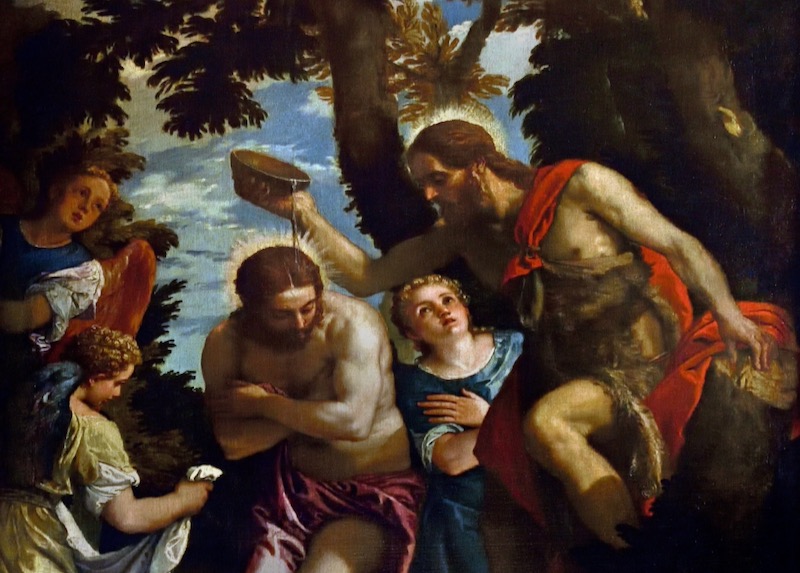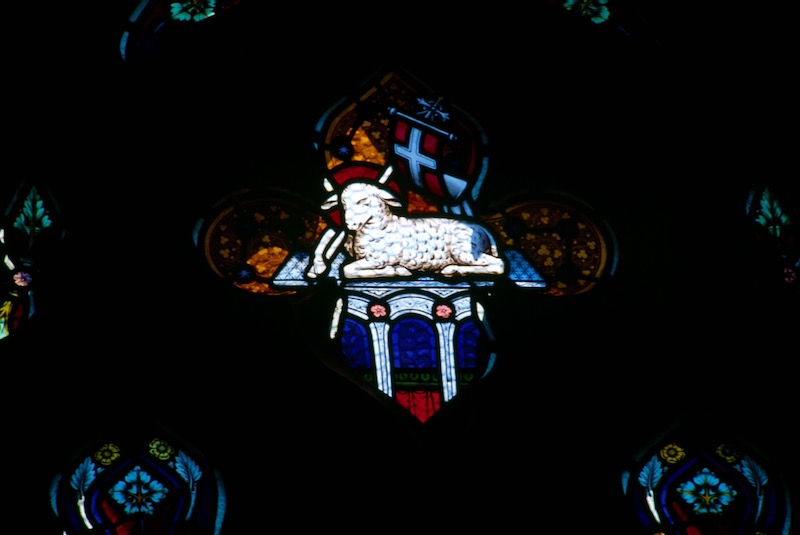For most of us, what comes to mind when we think of lambs is either fluffy creatures frolicking in a field or a Sunday roast. But when John the Baptist in this gospel calls Jesus the ‘Lamb of God’, he’s thinking of neither. What he had in mind was the paschal lamb, the lamb sacrificed and consumed on the night of Israel’s liberation from slavery in Egypt.
In calling Jesus, the ‘Lamb of God’, the Baptist was explicitly identifying him as the one whose self-sacrifice would deliver the new Israel from a far worse slavery. Jesus, John says, will “take away the sin of the world”. This raises three (at least) questions: first, what exactly is this ‘sin of the world’? Secondly, how does it relate to our all-too-familiar individual sins? And thirdly, how does the self-sacrifice of the Lamb of God deliver us from sin? The first thing to say is that this deliverance isn’t primarily from our individual sins, but, rather, from that of which our individual sins are a symptom, namely, the ‘sin of the world’.
And the traditional way of speaking about that ‘sin of the world’, is ‘Original Sin’. Original sin is often misunderstood to refer, primarily, to a catastrophic event in the long-distant past, at the origins of humankind, namely, the first sin, committed by the first human beings, our first ‘parents’, as it were. But, the primary reference of Original Sin is not to an event, but to the condition into which every human being, bar two, is born; a condition, in other words, that we inherit at our origins. The originale in peccatum originale, implies not ob origine but per originem: that is, not ‘from’ our origin, but ‘through’ or ‘on account’ of our origin.
The book of Genesis does, of course, offer an account of what it was that went wrong in the past, that brought about the condition in which we all now find ourselves: it offers us, in other words, an account of why things aren’t as they originally were. But talk of original sin starts from our universally shared experience, here and now, that what serves our lasting good no longer comes naturally to us or with ease, as if something has somehow gone wrong with our steering gear. Or, to use a more modern image, as if there’s a bug or a virus in the software. Whichever metaphor we prefer, it amounts to the same thing: instead of being inclined, naturally and rationally, to act in our best interest, we find ourselves inclined, un-naturally and irrationally, to the opposite.
And this affects us not only as individuals, but as a race. It infects the very structures of our shared, communal existence: the social structures, that is, which we’ve created. When St John, among the evangelists and many other Christian authors, speaks of ‘the world’, it’s shorthand for precisely that condition: for the presence of original sin, structurally and systemically skewing both individual human goals and communal social existence. That’s the ‘sin of the world’ from which Jesus frees us. But how? That question has been answered by a whole variety of so-called theories of ‘atonement’ or reconciliation. These theories have often drawn on social relationships of the time as their model. The great St Anselm of Canterbury (1033-1109), for instance, famously drew on models of feudal fealty, honour and debt satisfaction, in his efforts to express all this.
The Franciscan theory of atonement in the thirteenth-century, on the other hand, was much more direct and much simpler: (some, mainly Franciscans, would say much subtler). It differs from practically every other theory of atonement in not being tied to any specific social or cultural milieu. Like many things Franciscan, it starts out from God’s besottedness with everything he’s created, which is revealed to us in the incarnation, through which God convinces us that we’re loved, utterly and infinitely, and that we need never or could ever earn God’s love, nor ever fear losing it - even though, of course, we can freely reject it. Rejection is the risk God takes, as we all do, when we love someone. In this Franciscan view, creation and the Incarnation have the same purpose: creation is preparation for the Incarnation and the Incarnation is the point of creation. The Incarnation, in other words, wasn’t primarily a corrective measure, aimed at putting right what had gone wrong, but something that was willed from all eternity.
That’s why St Paul can speak of Christ as “the first-born of all creation”. This Franciscan insight, often referred to as ‘the doctrine of the primacy of Christ’, was championed especially by the great Franciscan philosopher-theologian, Blessed John Duns Scotus (c1266-1308), known in the Middles Ages as the doctor subtilis, (he also championed the Immaculate Conception). The gist is that it’s love, and love alone, that creates, unites, atones, and re-creates. And, correlatively, if fear is at the root of all sin, love and love alone, nullifies sin - both the propensity to sin and the consequences of sin – because love, even in our earthly existence, is the ultimately creative act, the divine source and goal of life itself, the ultimate affirmation of existence. Love is the unconditional delight God takes in us, the delight that brings us into existence in the first place. In concrete terms, Jesus rescued us from sin by making it possible for us to believe that the ultimate truth of our existence is that 4 we’re loved, not for a while, or on a trial basis, but unconditionally and forever.
The desire for the self-giving communion and oneness for which we all long, the desire for love, in other words, is the deepest truth about us and the deepest truth about the whole of creation, because it is the deepest truth about God, the Creator. It is the reason why he created us. And the love that is God was made visible in the Lamb of God, who takes away the sin of the world. It’s recounted that when his patron, Prince Esterhazy, first heard Haydn’s Nelson Mass, the Missa in Angustiis, he remarked, disapprovingly, that the setting of the Agnus Dei (‘Lamb of God, you take away the sins of the world’) was more cheerful than was customary. To which Haydn replied: “Excellency, I had in mind the tollis rather than the peccata”.



 Loading ...
Loading ...
What do you think?
You can post as a subscriber user ...
User comments (0)